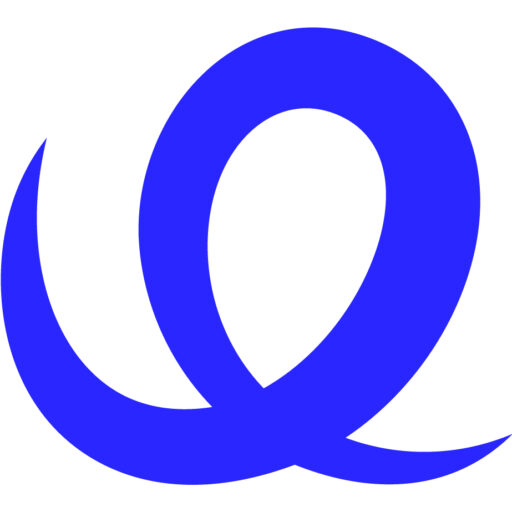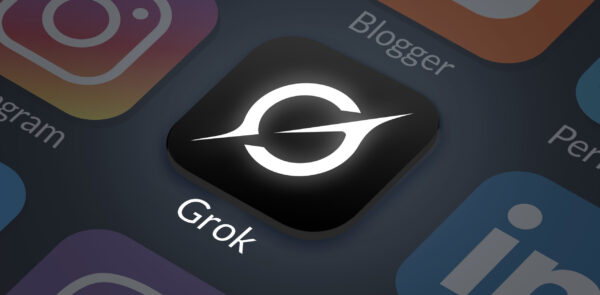
Table of Contents
Managing SEO for a publishing website presents unique challenges compared to standard sites, especially when aiming to boost visibility and engagement in a content-saturated digital landscape. We appreciate the nuances involved in optimizing for publishers, where timely news and articles demand strategies distinct from those for e-commerce or service-based businesses. This article explores five key differences between publisher SEO and regular SEO, providing insights to help you refine your approach and improve rankings. By understanding these distinctions, you can tailor your tactics to better suit your site’s goals, whether you’re running a news outlet or a general blog. We’ll dive deep into each difference, incorporating practical advice, statistics, and how AI tools like Generative AI, Google Search AI, ChatGPT, and Grok can enhance your efforts. This year, as search algorithms evolve to prioritize helpful content, grasping these variations becomes crucial for sustaining traffic and authority.
Consider the fast-paced world of publishing, where fresh content reigns supreme, versus regular SEO’s focus on evergreen topics. We encourage you to assess your current strategy as we discuss these differences, identifying opportunities to adapt. Whether dealing with high-volume article production or niche keyword targeting, these insights apply broadly, fostering better rankings through informed optimization. Let’s uncover how publisher SEO diverges from the norm and how you can leverage this knowledge for superior results.
Difference 1: Content Creation and Optimization
Content creation and optimization form the core of SEO, but the approaches differ significantly between publisher SEO and regular SEO due to varying goals and audience needs. In regular SEO, often applied to smaller websites or businesses, the emphasis lies on producing high-quality, evergreen content that targets a specific audience over time. We guide you to focus on in-depth pieces that solve problems or provide lasting value, such as guides on “best practices for home gardening.” This involves researching long-tail keywords with tools like Google Keyword Planner, ensuring content ranks steadily without frequent updates. Statistics show that evergreen content can generate up to 38% of leads for service-oriented sites, making it a reliable strategy for sustained traffic.
For publisher SEO, which caters to news outlets, magazines, or high-volume content platforms, the priority shifts to quantity and timeliness. Publishers must churn out large volumes of fresh articles daily to keep audiences engaged and capitalize on trending topics. We recommend using an editorial calendar to plan content around current events, optimizing for short-tail and trending keywords like “latest election updates.” This approach requires rapid optimization, including meta tags and headers that incorporate semantic variations for broader reach. With 52% of SEO professionals noting improvements from AI in content processes, integrating tools here is vital.
Diving deeper, regular SEO allows for thorough updates to existing content, refreshing it with new data or links to maintain rankings. Publishers, however, face the challenge of archiving older content while pushing new pieces, often using AMP for faster loading in news carousels. AI plays a transformative role; Generative AI can draft outlines for publisher articles based on trending queries, while ChatGPT refines language for readability and keyword integration. Google Search AI predicts emerging topics, enabling proactive content creation that aligns with user intent.
In practice, regular SEO benefits from niche focus, building authority through comprehensive resources that attract backlinks naturally. Publishers leverage scale, syndicating content across platforms to amplify visibility. We suggest A/B testing headlines in both, but publishers might prioritize clickbait-free, value-driven titles to retain trust. Statistics indicate publisher sites with optimized content see 30% higher engagement rates when using AI for personalization.
To bridge these differences, hybrid strategies can work—publishers incorporating evergreen pillars alongside news, or regular sites adding timely blogs. Grok analyzes competitor content strategies, offering insights to blend approaches effectively. This balanced optimization ensures rankings improve across contexts, driving organic growth.
| Aspect | Regular SEO | Publisher SEO |
|---|---|---|
| Focus | Evergreen quality | Timely quantity |
| Keyword Type | Long-tail niche | Short-tail trending |
| Update Frequency | Periodic refreshes | Daily new posts |
| AI Usage | Refinement tools | Trend prediction |
- Regular SEO Tips: Prioritize depth and longevity in content.
- Publisher SEO Tips: Maintain a steady flow of fresh articles.
- AI Integration: Use Generative AI for drafting and optimization.
Understanding this difference allows for targeted improvements in your content pipeline. As the Linchpin team, we specialize in digital marketing and strategy, assisting with AI-driven content optimization for both publisher and regular SEO to enhance rankings and engagement.
Difference 2: Link Building
Link building strategies diverge markedly between publisher SEO and regular SEO, reflecting their distinct scales and objectives. In regular SEO for smaller sites, the process involves building relationships within a niche to earn high-quality backlinks from relevant sources. We advise focusing on guest blogging, local citations, and outreach to influencers, targeting sites with strong domain authority in your field. For instance, a home improvement blog might secure links from gardening forums, emphasizing quality over quantity to avoid penalties. Statistics reveal that sites with robust link profiles see 20-30% higher rankings, making deliberate, targeted efforts key.
Publisher SEO, geared toward large media outlets, capitalizes on inherent authority to attract backlinks naturally through content syndication and partnerships. Publishers often release press releases or exclusive reports that high-authority sites link to organically. We recommend leveraging this by creating shareable, in-depth pieces like investigative articles, which can garner thousands of links. With 66% of pages having zero backlinks, publishers’ scale gives them an edge in accumulating citations quickly.
Exploring further, regular SEO requires manual outreach, crafting personalized emails to secure placements, while publishers use networks for syndication, amplifying reach. AI enhances both; Grok identifies potential link partners by analyzing domain data, and ChatGPT drafts outreach messages that resonate. Google Search AI evaluates link quality trends, helping prioritize opportunities.
In publisher contexts, internal linking across vast content libraries boosts authority distribution, unlike regular sites’ focus on external acquisitions. We suggest monitoring link health with tools to disavow toxic ones, ensuring sustained benefits. Publishers benefit from social signals too, as shares lead to links, whereas regular SEO relies more on direct partnerships.
Hybrid tactics can bridge gaps—regular sites syndicating select content, publishers nurturing niche relationships. Generative AI simulates link campaigns, forecasting outcomes for better planning. This strategic link building fortifies your site’s foundation, improving rankings across search landscapes.
| Method | Regular SEO | Publisher SEO |
|---|---|---|
| Primary Tactic | Manual outreach | Natural attraction |
| Focus | Niche relevance | High-volume syndication |
| AI Role | Prospect identification | Content amplification |
| Impact | 20-30% ranking boost | Rapid authority growth |
- Outreach Best Practices: Personalize emails for higher response rates.
- Syndication Tips: Partner with aggregators for wider distribution.
- AI Tools: Use Grok for link prospect analysis.
Adapting link strategies to your site type yields optimal results. As the Linchpin team, we focus on digital marketing and strategy, developing customized link building plans with AI support for publisher and regular SEO to elevate your authority and rankings.
Difference 3: Technical SEO
Technical SEO underpins site performance, but its implementation varies between publisher and regular SEO due to scale and content dynamics. For regular SEO on smaller sites, the focus remains on foundational elements like mobile-friendliness, HTTPS, and basic schema markup. We recommend conducting regular audits to ensure fast loading times and clean code, using tools like PageSpeed Insights to address issues. This setup supports steady crawling, with statistics showing compliant sites enjoying 24% better visibility in search results.
Publisher SEO demands advanced technical practices to handle massive content volumes without compromising speed. Publishers invest in extensive structured data, AMP for mobile news, and sophisticated CMS like WordPress with custom plugins. We advise implementing server-side rendering for dynamic content, ensuring instant indexing for timely articles. With large sites facing crawl budget limits, optimizing sitemaps and robots.txt becomes critical, as publishers can have millions of pages.
Further, regular SEO might suffice with basic redirects and canonical tags, while publishers require complex setups for duplicate content across editions. AI revolutionizes audits; Generative AI suggests code optimizations, and Grok simulates crawl behaviors to preempt issues. Google Search AI evaluates technical health against algorithm updates, guiding proactive fixes.
Publishers also prioritize rich snippets for news carousels, using JSON-LD schema to enhance CTR by 20-30%. Regular sites focus on local schema if applicable. We suggest hybrid audits, blending manual checks with AI for comprehensive coverage. This technical rigor ensures seamless user experiences and search performance.
In essence, publisher technical SEO scales complexity to match content output, whereas regular emphasizes reliability. ChatGPT can generate schema code tailored to your needs, streamlining implementation. By addressing these aspects, you fortify your site against volatility, securing better rankings.
| Feature | Regular SEO | Publisher SEO |
|---|---|---|
| Schema Markup | Basic implementation | Extensive for news |
| Crawl Management | Standard sitemaps | Optimized budgets |
| Speed Focus | Core Web Vitals | AMP integration |
| AI Assistance | Audit suggestions | Crawl simulations |
- Audit Frequency: Conduct monthly for regular, weekly for publishers.
- Schema Types: Use FAQ for regular, NewsArticle for publishers.
- AI Optimization: Leverage Generative AI for code tweaks.
Navigating technical differences optimizes your site’s infrastructure. As the Linchpin team, we provide digital marketing and strategy, performing AI-enhanced technical SEO audits for publisher and regular sites to improve crawl efficiency and rankings.
Difference 4: User Experience (UX) and Design
User experience and design play crucial roles in SEO, differing in complexity between publisher and regular setups. Regular SEO for smaller sites prioritizes clean, intuitive designs that facilitate easy navigation and quick information access. We encourage using simple layouts with clear CTAs, ensuring mobile responsiveness to cater to users on the go. Statistics indicate that intuitive UX reduces bounce rates by 50%, fostering longer sessions and better rankings.
Publisher SEO involves sophisticated UX to manage high traffic and personalize experiences for diverse audiences. Publishers implement features like infinite scroll, related content widgets, and recommendation engines to keep readers engaged across articles. We recommend A/B testing layouts to optimize for dwell time, as publishers aim for page views and ad impressions. With 91% of users preferring personalized content, AI-driven recommendations are essential.
Delving into details, regular sites focus on accessibility with readable fonts and alt text, while publishers handle multimedia-heavy pages without slowdowns. Grok analyzes user flow data to suggest design tweaks, and Generative AI prototypes variations for testing. Google Search AI predicts UX trends, like voice navigation integration.
Publishers often use progressive web apps for offline access, enhancing loyalty, whereas regular sites emphasize conversion funnels. We advise incorporating heatmaps in both to refine elements, ensuring designs align with SEO goals. This focus on UX directly impacts rankings, as Google favors user-friendly sites.
Blending approaches, regular sites can add personalization modules, publishers simplify core navigation. ChatGPT generates user personas for design decisions, tailoring experiences effectively. Strong UX design elevates engagement, supporting sustained SEO success.
| Component | Regular SEO | Publisher SEO |
|---|---|---|
| Navigation | Simple menus | Infinite scroll |
| Personalization | Basic CTAs | AI recommendations |
| Bounce Reduction | 50% | Extended sessions |
| AI Tools | Flow analysis | Prototyping |
- Design Principles: Ensure mobile-first for all.
- Engagement Features: Add widgets for publishers.
- AI Testing: Use Grok for user data insights.
Refining UX based on site type enhances user satisfaction and rankings. As the Linchpin team, we specialize in digital marketing and strategy, designing AI-optimized UX for publisher and regular SEO to boost engagement and performance.
Difference 5: Analytics and Measurement
Analytics and measurement differ in scope and tools between publisher and regular SEO, reflecting their operational scales. Regular SEO relies on basic tools like Google Analytics to track traffic, rankings, and conversions, focusing on ROI from leads or sales. We suggest monitoring keyword performance and user paths to adjust strategies, with data showing 14.6% close rates for SEO leads.
Publisher SEO employs advanced analytics for user behavior, page views, and ad revenue, using platforms like Google Analytics 4 with custom events. Publishers track content performance in real-time, optimizing for engagement metrics. Statistics highlight 91% of marketers noting SEO’s positive impact, but publishers measure against ad impressions too.
Exploring analytics depth, regular sites analyze bounce rates and session durations for refinements, while publishers use heatmaps and A/B tests for monetization. AI like Grok forecasts trends from data, ChatGPT interprets reports for actionable insights. Google Search AI evaluates query performance, guiding measurement.
Publishers integrate multiple sources for comprehensive views, regular focus on core KPIs. We recommend dashboards in both for visualization, ensuring data informs decisions. Generative AI creates custom reports, highlighting anomalies for quick fixes.
This measurement precision drives iterative improvements, sustaining rankings. Regular sites benefit from simple tracking, publishers from granular insights.
| Metric | Regular SEO | Publisher SEO |
|---|---|---|
| Primary KPI | Conversions | Page views |
| Tools | Basic GA | Advanced with events |
| Close Rate | 14.6% | Engagement-focused |
| AI Role | Insight generation | Trend forecasting |
- Tracking Methods: Use custom events for depth.
- Data Interpretation: Leverage AI for reports.
- Adjustment Cycles: Review monthly or real-time.
Effective analytics tailor to your SEO type for better outcomes. As the Linchpin team, we offer digital marketing and strategy, implementing AI-powered analytics for publisher and regular SEO to refine measurements and rankings.
Conclusion
These five key differences between publisher SEO and regular SEO—spanning content, links, technicals, UX, and analytics—provide a roadmap to optimize your site effectively for improved rankings. By adapting strategies to your site’s nature and incorporating AI, you can achieve greater visibility and engagement. As the Linchpin team, we excel in digital marketing and strategy, helping with customized SEO plans using tools like Generative AI and Grok to bridge these differences and drive results.
If you need help with SEO, contact the Linchpin team today to discuss enhancing your rankings.



